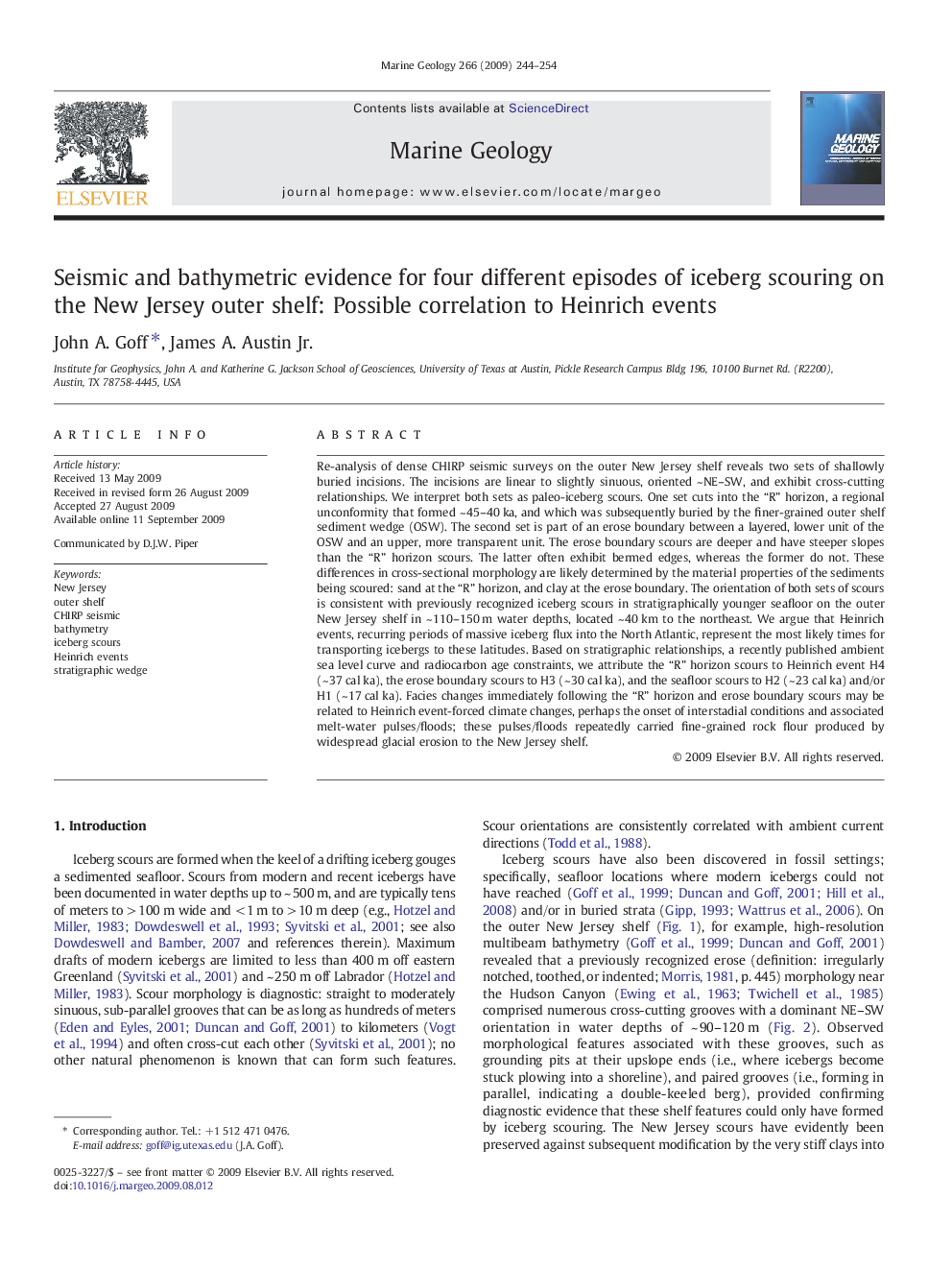| کد مقاله | کد نشریه | سال انتشار | مقاله انگلیسی | نسخه تمام متن |
|---|---|---|---|---|
| 4718978 | 1639158 | 2009 | 11 صفحه PDF | دانلود رایگان |

Re-analysis of dense CHIRP seismic surveys on the outer New Jersey shelf reveals two sets of shallowly buried incisions. The incisions are linear to slightly sinuous, oriented ~NE–SW, and exhibit cross-cutting relationships. We interpret both sets as paleo-iceberg scours. One set cuts into the “R” horizon, a regional unconformity that formed ~ 45–40 ka, and which was subsequently buried by the finer-grained outer shelf sediment wedge (OSW). The second set is part of an erose boundary between a layered, lower unit of the OSW and an upper, more transparent unit. The erose boundary scours are deeper and have steeper slopes than the “R” horizon scours. The latter often exhibit bermed edges, whereas the former do not. These differences in cross-sectional morphology are likely determined by the material properties of the sediments being scoured: sand at the “R” horizon, and clay at the erose boundary. The orientation of both sets of scours is consistent with previously recognized iceberg scours in stratigraphically younger seafloor on the outer New Jersey shelf in ~ 110–150 m water depths, located ~ 40 km to the northeast. We argue that Heinrich events, recurring periods of massive iceberg flux into the North Atlantic, represent the most likely times for transporting icebergs to these latitudes. Based on stratigraphic relationships, a recently published ambient sea level curve and radiocarbon age constraints, we attribute the “R” horizon scours to Heinrich event H4 (~ 37 cal ka), the erose boundary scours to H3 (~ 30 cal ka), and the seafloor scours to H2 (~ 23 cal ka) and/or H1 (~ 17 cal ka). Facies changes immediately following the “R” horizon and erose boundary scours may be related to Heinrich event-forced climate changes, perhaps the onset of interstadial conditions and associated melt-water pulses/floods; these pulses/floods repeatedly carried fine-grained rock flour produced by widespread glacial erosion to the New Jersey shelf.
Journal: Marine Geology - Volume 266, Issues 1–4, 15 October 2009, Pages 244–254